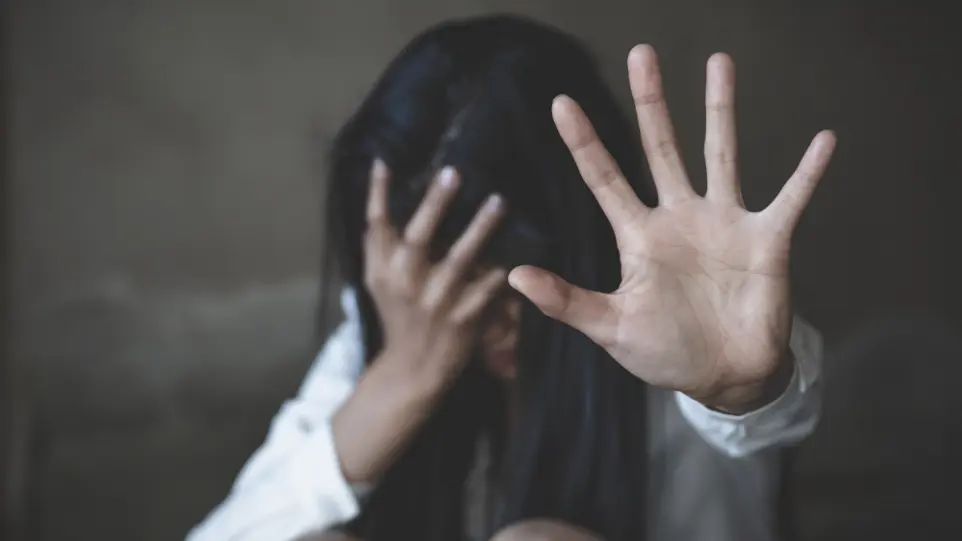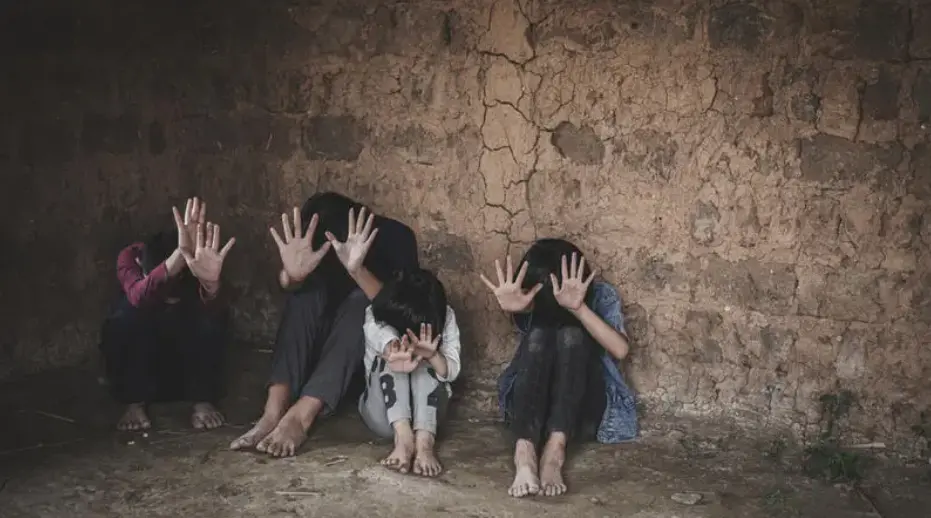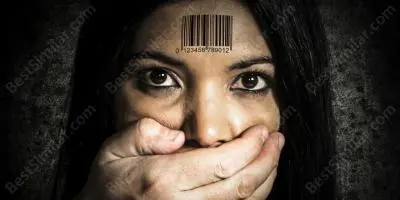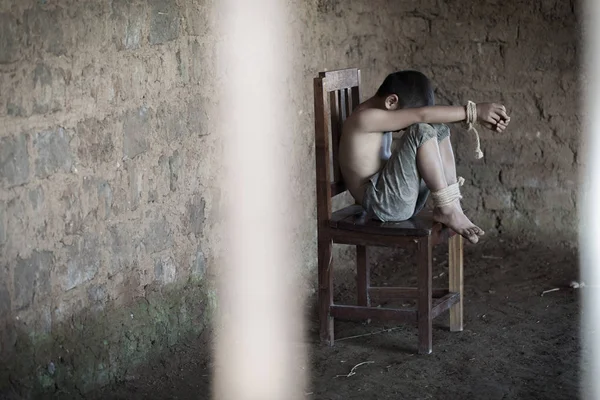



Human trafficking
It should not be confused with Illegal human trafficking.
Human trafficking, human trafficking or human trafficking is the illegal movement of human beings for the purposes of labor, mental, reproductive slavery, sexual exploitation, forced labor, removal of organs, or any modern form of slavery against will and well-being. of the human being. Much of human trafficking is carried out for commercial purposes and clandestinely.
Human trafficking is an international crime against humanity and violates a person's human rights. Also, it is called 21st century slavery. It is a violation of human rights that threatens the freedom and dignity of the victims. This includes the illegal recruitment and transportation of people.
The United Nations Protocol to Prevent, Suppress and Punish Trafficking in Persons, Especially Women and Children (better known as the Protocol against Human Trafficking) was adopted in Palermo Italy in 2000, ratified by Spain in 2003, it is an agreement international annexed to the United Nations Convention against Transnational Organized Crime. The Protocol against Trafficking in Persons is one of the three protocols adopted to facilitate the application of the Convention. The purpose of the agreement is to promote international cooperation, investigations and criminal proceedings against criminals engaged in human trafficking. A first objective is to protect and assist the victims of such crimes in full respect of human rights. It is the first global instrument to combat human trafficking and the only one so far that attributes a universal definition of this phenomenon.
The Protocol makes the following details of interest:
- "Human trafficking" means the recruitment, transportation, transfer, harboring or receipt of persons, using the threat, use of force or other forms of coercion, fraud, deception, abuse of power or a situation of vulnerability, to the granting or receipt of payments or benefits to obtain the consent of a person who has authority over another, for the purposes of exploitation. That exploitation will include; sexual exploitation, forced labor or services (in inhumane conditions and without remuneration), slavery or practices analogous to slavery, servitude or the removal of organs.
- The consent given by the victim of human trafficking to any form of intentional exploitation described in any way will not be taken into account when any of the means stated above has been resorted to.
- The recruitment, transportation, transfer, harboring or receipt of a child for the purposes of exploitation will be considered "human trafficking" even when none of the listed means is used.
- "Child" means any person identified, through documentation proving their identity, as a person under 18 years of age without a responsible guardian accompanying them.
The difference between human trafficking and smuggling
Human trafficking and smuggling are often confused, but they are two different crimes. It’s important to spot the differences. Learn more:
About Human Trafficking
Human trafficking can occur inside or outside the national territory.
Human trafficking always involves crossing borders.

Get informed and prevent human trafficking
In human trafficking, the purpose pursued is the exploitation of the victim, who may or may not be a national of the country. In human trafficking, the objective is the illegal entry of the subject into a country of which he is not a national or legal resident and the relationship ends with arrival at the destination.
What is human trafficking?
It is the action of capturing, transporting, transferring, harboring or receiving people, resorting to the threat or use of force or other forms of coercion, such as kidnapping, fraud, deception, abuse of power or a situation of vulnerability or the giving or receiving of payments or benefits to obtain the consent of a person who has authority over another for the purposes of exploitation.
Victims can be transported within or outside the country. They are deprived of their freedom in order to be exploited in different ways; Within the country the most recurrent are:
• Labor exploitation.
• Commercial sexual exploitation.
• Guardianship or adoption.
• Forced begging.
• Servile marriage, free or de facto union.
• Employment in criminal activities.
• Organ extraction.
What is human smuggling ?
It is the facilitation of the illegal entry of a person into a State of which said person is not a national or permanent resident, in order to obtain a financial or other material benefit, in most cases the entry is with documents. illegal or without complying with the requirements requested by law. Human trafficking only occurs when a border is crossed.
Differences:
- Trafficking is a crime against a person and a violation of human rights.
- Trafficking is a crime against a State and a violation of the immigration laws of a certain country. In both crimes there are criminal networks and organizations that carry out trade operations with human beings.

How can we prevent cases of human trafficking and smuggling? Through prevention actions: Recommendations for parents:
•Dialogue, communicate and build trust with your children.
•Get to know your daughters' and sons' friends and have their addresses and phone numbers on hand.
•Teach your daughters and sons to distrust strangers and NOT ACCEPT ANY TYPE OF GIFTS from them.
•Recommend your daughters and sons NOT TO ENGAGE IN CONVERSATIONS WITH STRANGERS and much less to provide personal information.
•If your daughter or son was offered a job in another department or country, find out who made the offer and contact that person before making a decision.
• DO NOT allow your daughters or sons to TRAVEL ALONE or in the company of strangers while they are minors.
• It is important that your daughter or son knows the exact address of your home, as well as the emergency numbers (police, hospital, etc.).
• Have recent photographs of your daughters and sons and save their identification documents.
• Accompany your minor daughters or sons to crowded places, such as: squares, markets, cinemas, public bathrooms, fairs, fleet terminals, etc.
• Do not let your minor daughters or sons attend school alone, pick them up and drop them off at the educational establishment.
• Control your daughters and sons about unlimited access to the Internet and advise them not to send personal information, addresses and personal images through social networks.
• Teach your daughters and sons not to date people they have met online.
• Alert your daughters and sons about the use of photographs on the Internet, especially those that can provide information about the environment in which they operate, such as street names, places where they frequently attend, among others. Talk to them and explain to them that all the information they upload to the network can be consulted by the traffickers themselves.

Recommendations for Adolescents:
• The more alone or lonely you are, the more vulnerable you are and you can be easy prey for deception and the crime of trafficking. This is why it is important that you always tell your parents or people you completely trust if you suspect or have doubts about offers they make to you.
• Do not trust easy offers, they can be organized networks of criminals that operate inside and outside the country
• Do not give your personal information or that of your family to strangers and do not give your documents to anyone.
• Don't go alone to job interviews, ask a family member or friend to accompany you.
• If you are going to travel, a trusted family member should accompany you, find out everything about the department and the country where you will travel. You must know the emergency telephone numbers.
• If you access social networks on the internet, do not give data about your daily activities or places you are going to frequent, much less your residential address.
• Do not give anyone your passport or identification document.
• If you travel, provide all possible and detailed information to your family and friends about your trip, names of contact people, company, agency, telephone numbers, address of the place of lodging, telephone numbers and others.
• If you are asked to give false information when filling out forms, interviews or at any border post to go to another city or country where you are supposed to work, do not do it; ALERT, inform yourself, find out all the details and report.
• If you are asked to give false information when filling out forms, interviews or at any border post to go to another city or country where you are supposed to work, do not do it; ALERT, inform yourself, find out all the details and report.
INTERNATIONAL HUMAN RIGHTS ORGANIZATION
We are facing child trafficking everywhere, for many years, but I believe that real defenders of children's rights could be part of our fight to put an end to this very delicate cause for everyone, wherever. Without children there will be no schools, there will be no Education, there will be no family, there will be no society, there will be no humanity.
ENOUGH WITH CHILD TRAFFICKING
The Dark Facade of Illegal Adoption: Trafficking’s Innocent Victims
Adoption is often seen as a beacon of hope for both children in need of a family and for prospective parents longing to care for a child. Unfortunately, there’s a darker side to this narrative that is rarely discussed but is crucial to understand: the trafficking of children under the guise of adoption. This complex and heart-wrenching issue takes advantage of the vulnerable, and it is a global problem that demands our attention.
Linking Missing Persons to Human Trafficking Efforts
Have you ever scrolled through social media and come across a post about a missing person? It’s alarming how often these notices appear, and behind each one is a story that could potentially be linked to something as sinister as human trafficking. The challenge law enforcement faces in addressing missing persons in the context of human trafficking is not just a legal issue, but a societal one. It calls for a concerted effort between law enforcement, non-governmental organizations (NGOs), and the community at large. How do we leverage missing persons reports to aid in the fight against human trafficking? Let’s dive into the strategies and methods that can help turn the tide on this global crisis.
The human trafficking story arc
Unlike murder, or robbery, human trafficking is not a single event that happens at one specific moment in time. Trafficking occurs through a series of activities that take place over time, throughout the course of a day, for months or even years.
Like any traditional, linear narrative, the story of every sex and labor situation has a beginning, a middle and – we hope – an end. The beginning and middle tend to follow fairly common patterns. How trafficking ends is as unique as the resilient survivors who manage to find their ways to freedom.
Beginning
Recruitment: Human trafficking victims are rarely picked at random. They are targeted for vulnerabilities that make them susceptible to the enticement the trafficker has to offer. That enticement depends on the type of trafficking and the victim.
Grooming: Victims are manipulated slowly and expertly until something they would never ordinarily do or accept becomes something that feels normal and even necessary.
Middle
Trafficking, coercion and control: The methods traffickers use to control victims may include violence, but often do not. Instead, labor trafficking victims are controlled through threats (like the threat of deportation) or economic abuse, such as wage theft and debt bondage. In sex trafficking situations, coercion and control is often a toxic cocktail of violence, confused loyalty, economic or physical need, love, manipulation and abuse.
End
Exit and healing: While there are organizations that claim to “rescue” human trafficking victims, the reality is that adult survivors rescue themselves. That process generally takes place over time as the person in the situation begins to recognize that they want to change the way they are living, or that they are in an abusive job or relationship. Sometimes they seek help and services, and sometimes they make their own ways toward freedom.
Understanding Human Trafficking
Delve into the complex legal frameworks and human rights implications surrounding the illicit trade and exploitation of human beings. This subject sheds light on the critical role of law enforcement and international cooperation in combating this global scourge and protecting victims’ rights.
Read more about itTrafficking in the news
The way in which the media covers information about human trafficking is important, not only to learn more about this crime, but also to understand how it operates, the degree of vulnerability of survivors, and how they are revictimized and stigmatized.
Continue reading 





